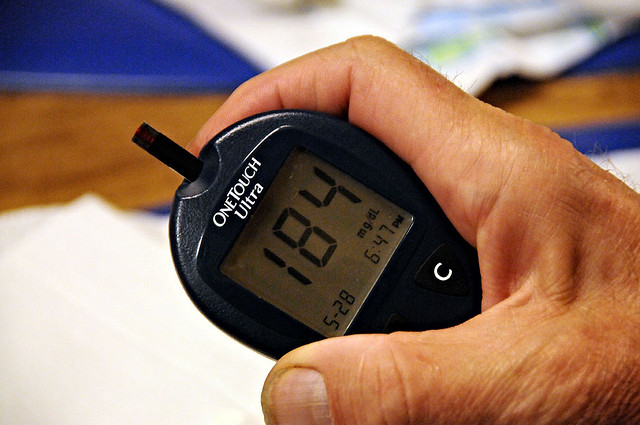Blood sugar, or glucose, is one of the best things Mother Nature ever provided us with. It’s one component of your body chemistry that helps you feel alive and happy.
When glucose is at the right level, you’re likely to experience a great attitude, a strong immune system, low stress, and a good night’s sleep as well. But when blood sugar gets too high, then “crashes,” or falls very low, the effects can be devastating to bodily processes.
For this reason, the body strives to maintain blood sugar levels within a narrow range through the coordinated efforts of several glands and their hormones.
Understanding Blood Sugar Control
 After you eat a meal, the sugars in each of the foods you eat raises the level of sugar in your blood. The body responds by secreting insulin — a hormone produced by the pancreas. Insulin lowers blood sugar levels by increasing the rate at which glucose is taken up by cells throughout the body.
After you eat a meal, the sugars in each of the foods you eat raises the level of sugar in your blood. The body responds by secreting insulin — a hormone produced by the pancreas. Insulin lowers blood sugar levels by increasing the rate at which glucose is taken up by cells throughout the body.
If you go too long without eating, or eat the wrong (read: “junk”) foods, or if your hormones are out of balance, your blood sugar will fall too low. When this happens, your adrenal glands will release adrenalin and cortisol in order to remedy the situation. At this point, you should eat food that will slowly and gradually raise your blood sugar levels again.
Most of the time, eating three square meals a day keeps your blood sugar in balance. But when this process gets out of whack, you can find yourself on the blood sugar roller coaster, with no one at the brake switch.
How do you know if you’re holding a ticket to this invisible junk food ride?
12 Signs Your Blood Sugar Is Out Of Control
1. Your waist is larger than your hips.
2. You find it difficult to lose weight.
3. You crave sweets.
4. You feel infinitely better after you eat.
5. You get irritable if you miss a meal.
6. You cry for no reason.
7. You feel a bit spacey and disconnected.
8. You get anxious for no apparent reason.
9. You wake up frequently during the night.
10. You feel hungry all the time.
11. You get very sleepy in the afternoon.
12. You’ve been tested and have elevated blood sugar or triglyceride levels.
There are a natural solutions that can help stabilize your blood sugar. Start to address the problem by changing your diet. Rapidly fluctuating blood sugar levels are generally a result of more-than-moderate consumption of foods with a high content of refined or simple sugars.
Eat To Control Your Blood Sugar
It’s important to avoid foods that cause a rapid rise in blood sugar levels. One useful tool that tells us what foods to avoid or eat in moderation is the glycemic index (GI). It’s a numerical scale used to indicate how fast and how high a particular food raises blood sugar levels compared to glucose. Refined sugars, white flour products, and other sources of simple carbohydrates and sugars are quickly absorbed into the bloodstream, causing a rapid rise in blood sugar and severely stressing blood sugar control. So it’s important to avoid “junk food” and pay attention to the glycemic index of food that you eat.
Best and Worst Foods to Control Blood Sugar
Here is a simple list of foods you probably already eat and how they affect you in terms of blood sugar, based on the glycemic index (GI) scores. These “natural” sugars can also keep you strapped to the roller coaster if you don’t know how to manage them.
Foods that have a very high glycemic score should be consumed in moderation or avoided. These include refined sugar, rice cakes, and granola.
The following foods have high scores, but not quite as high: white bread, carrots, corn, kidney beans, bran muffins, potatoes, white rice, bananas, raisins, and beets. Keep these to a minimum.
Foods that are medium on the glycemic index include sweet fruits such as grapes, peaches, pineapple, oranges, and melons. Starchy foods that have medium glycemic scores include brown rice, pasta, oatmeal, yams, and peas. Eat these when you need energy, but don’t overdo it.
If you want to eat foods that keep your blood sugar humming at a nice steady rate, eat foods with a low glycemic score: apples, apricots, cherries, grapefruit, asparagus, broccoli, celery, lentils, nuts, and seeds.
Dr. Michael Murray
11/18/2014



